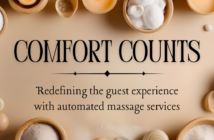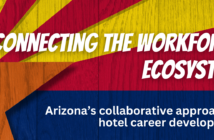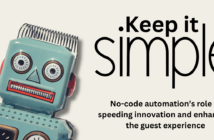Focusing on the fundamentals for big wins
by IAN BARROW
The hotel industry has always experienced a higher-than-average staff turnover rate. However, the situation is getting critical with 82% of hotels indicating they’re experiencing a staffing shortage, and 26% are so severely impacted it’s affecting the hotel’s ability to operate.
There are many reasons given for these staffing issues, from poor rates of pay through to toxic workplace cultures, but one thing is for sure – more needs to be done to make hotels attractive places to work. Otherwise, the time and cost of filling vacated roles will spiral. And, the starting point for this must be “active listening.”
THE KEY TO SUCCESS
When employers don’t regularly listen to what their people want and how they feel about their employee experience, this inevitably leads to a high staff turnover. After all, trying to fix poor staff retention without understanding why your people are actually leaving is like trying to drive a car with no steering wheel — you may be able to move forward, but you might not be headed in the right direction.
To obtain an honest and thorough understanding of your employees’ everyday experience and how you can improve it, you must implement an employee-listening program that enables feedback to be gathered on an ongoing basis.
First, you need to establish what you want to find out against what you are trying to achieve as a business and then split this into manageable chunks. It could be that you initially want to know the effectiveness of your onboarding process, followed by the top reasons your employees are leaving. You may then wish to drill down into specific areas of your firm such as the quality of management, employees’ health and well-being, diversity and inclusion, and training and development opportunities. Based on the insights you’re after, this informs the questions you need to ask.
TEAMWORK MAKES THE DREAM WORK
The next challenge is to obtain regular feedback from employees who are working different shift patterns and may be located across different hotels. Finding time for one-on-one and team meetings between managers and their direct reports is important, but this alone won’t provide the detailed insights needed to drive positive change. Plus, bringing teams together on a regular basis may prove too challenging.
Consequentially, engagement surveys should be used in combination with face-to-face feedback, along with a pulse survey, which is a great tool for collating regular and anonymous feedback so employers can regularly “temperature-check” employee sentiment. When pulse surveys are used alongside onboarding and exit surveys, you have the backbone in place for an effective active-listening program.
Of course, you ideally need employee engagement software to automate and streamline the distribution and management of the surveys. Otherwise, the process will be too resource-intensive and simply won’t be repeated on a regular basis. It’s also important to ensure that the surveys can be accessed and completed on mobile devices, so your deskless workers aren’t excluded.
Having a dashboard of insights from your surveys that can be sliced and diced will then provide a solid foundation for improving how your employees feel about their work. For instance, you may discover the recommended onboarding process is rarely followed due to the urgent need to fill roles quickly and that employees aren’t feeling valued or appreciated.
Alternatively, you may find the onboarding period works fine but that employees feel abandoned once it’s over, and so introducing a “buddy system” for all new hires – so they’re well-supported during their first few months in the job – could make all the difference in supporting and retaining newer team members.
To make impactful improvements to staff retention means taking the time to find out the root causes of staff disengagement. And this is only possible with active listening – the process of asking employees the right questions, listening to the answers, and then acting upon the insights.
Not only will taking this approach reduce staff turnover, it also will help improve other key business metrics, including customer satisfaction, occupancy rates, and revenue growth.
 Ian Barrow is a senior employee experience consultant at employee engagement company, WorkBuzz. He has been working with organizations to improve their culture, employee experience and engagement for more than 25 years, helping senior leaders build better places to work. He’s passionate about understanding employee behaviors and motivations to create more inspiring and empowered work environments.
Ian Barrow is a senior employee experience consultant at employee engagement company, WorkBuzz. He has been working with organizations to improve their culture, employee experience and engagement for more than 25 years, helping senior leaders build better places to work. He’s passionate about understanding employee behaviors and motivations to create more inspiring and empowered work environments.




